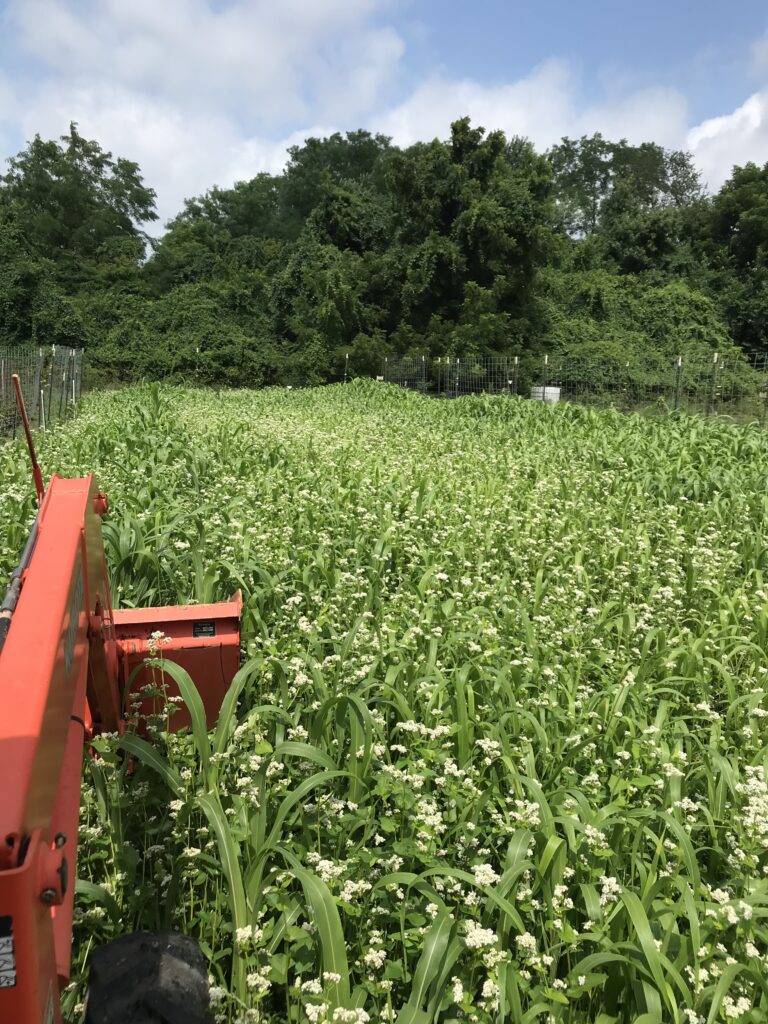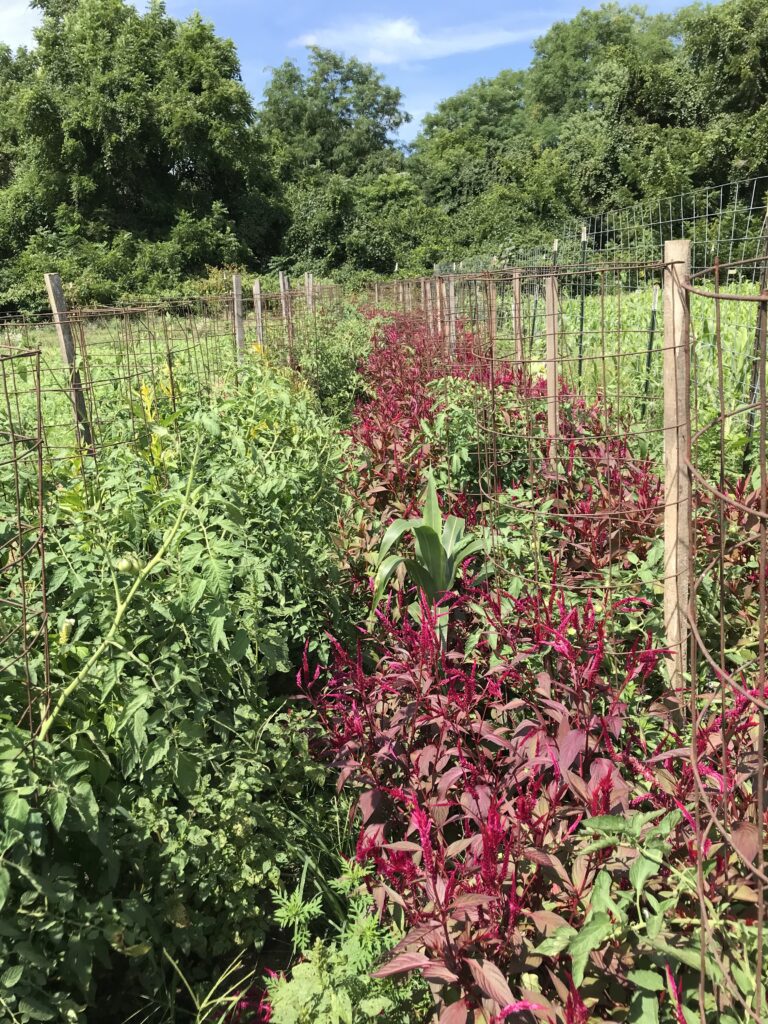A new solar powered electric fence charger was installed. We had a lot of fence repair to do and some still to go. The fence was not taking a charge and we spent some time making sure that no vegetation was touching the wire and defusing the charge. Then we replaced any damaged insulation points where the wire was touching the t-posts. Several points connected all three of the fence wires and all of those were undone. Finally the wires from the charger to the fence were replaced with heavy gauge wires and after that a very stiff charge came through the fence. In an attempt to train the deer to fear the fence again we made foil packets of peanut butter and attached them to the fence.
There was a final incident with our vagrant camp, an intoxicated person bothered several interns and then hid in brush just a few feet away from them and stared at them while they worked. They felt unsafe and left. That evening the police came and bothered the camp again. That night the shed lock was torn off and the cash box with around $300 and line trimmer were stolen. The camp was of course empty.
It started raining a bit again after a two month dry spell, the plants outside of tunnels are being immediately swallowed by weeds. It seems the weeds that were tiny and seemed insignificant outcompeted cash crops as soon as there was any precipitation, taking us from one management problem to the next-wedding. The crew and I are still trying to catch up with weed problems caused by using sprinklers in high tunnels and are now losing crops under outdoor weeds as well. The two biggest weeds are grasses and purslane. Purslane is easy to remove and grass is extremely difficult. I had hopes of weed pressure being reduced by cover cropping but it seems that the management needs a bit of tweaking. The cover crops we are using seem to allow our main weeds to complete their life cycles in fields despite the cover crops presence. We are using buckwheat, sudangrass and sunhemp as warm weather cover crops. Buckwheat alone gives a very poor result especially on the fields where historically the topsoil had been removed. Several inches of bare soil persisted between buckwheat plants that only reached a foot or less in height. Mixes of sudangrass and buckwheat took up more space and appeared to be proper cover. This mix was mowed when the buckwheat reached the “milk” stage which killed it. The sudangrass is regrowing but there is a nearly even cover of lawn grass growing under the cut sudan grass that has persisted through tall shading and the cover of the cut biomass. I am trying a mix of the three cover crops together. So far sudangrass is growing rapidly, sunhemp is growing very slowly and buckwheat was sown a week later between the other seedlings and is just germinating. Hopefully this mix will work well for outcompeting weeds. It may need the addition of a sprawling plant such as field peas to really take up all the soil space. The cover crops may not be outcompeting the weeds but their ecological services are still drastic. Keeping buckwheat stands of different maturities has brought swarms of beneficials to the farm. I learned recently that some plants produce nectar on extrafloral nectaries and that buckwheat is one of those plants. The significance of extrafloral nectaries ties in with banker plants and floral strips. Many beneficial insects use the extrafloral nectaries as reserve foods as well as alternate food for differing developmental stages allowing them to produce multiple generations on these plants. Pollinators are of course prolific but also many many birds spend hours foraging in the cover crops. Nesting birds ring the farm and use the cover crops as food and nesting material. Toads are plentiful in the dense cover as well and coyotes have been using the cover crops as ambush screening. Watching the diversity in the cover crop areas helps me to form a working picture of the concept of farmscaping. Farmscaping is another new term for me and is a way of viewing a farm as a whole, not just looking at the fields.

